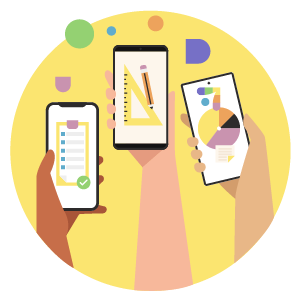Step-by-step guide
MeasureUp is a comprehensive, open-source valuation framework designed for Social Value and Impact practitioners, offering transparent tools to measure economic, social, fiscal, and environmental outcomes. It helps organisations develop their practices, from beginner to advanced levels, by incorporating feedback from beneficiaries and aligning with UK government standards. Unlike other frameworks, MeasureUp is free to everyone and continually updated, ensuring robust, defensible reporting that evolves with emerging trends in impact measurement and avoids issues like ‘social value washing.’
How to get started
Step 1: Understand outcomes and activities
- Outcomes: Outcomes are the results stemming from an activity or intervention, ranging from enhancements in well-being to reductions in carbon emissions. MeasureUp categorises outcomes with clear definitions as “Master Outcomes”.
- Activities: Activities are the actions undertaken to achieve specific outcomes for stakeholders. It’s crucial to verify each value to avoid double-counting impact.
Step 2: Apply the values and grades
Not all measurements and valuations are created equal. MeasureUp offers various levels of accuracy, robustness, and rigour, helping you choose the right balance between ease of application and accuracy.
- Bronze: Proxies for planning and estimating
- Silver: Differentials for getting more specific
- Gold: Surveys and measurements of actual results
- Gold+: Ensuring the value is entirely attributable
Value and grades
Not all impact measurements are created equal. At MeasureUp, we understand the importance of accuracy, robustness, and rigour in assessing social and environmental impact. That’s why we offer a range of valuation levels—Bronze, Silver, Gold, and Gold+—each providing different levels of confidence for users.
These levels enable you to strike the right balance between ease of application and accuracy, ensuring transparent communication of your valuation method’s accuracy level. We believe in recognising not only the value of the activity or outcome but also the effort invested in ensuring its accuracy and your confidence in it.
Explore our valuation levels below to discover how MeasureUp can elevate your impact measurement efforts:
Each value is classified by the ONS wellbeing dimension it fits in, so ‘volunteering regularly’ comes under ‘what we do’ and is the second value under this dimension, therefore it is coded as WWD2.
Under each value you will find a description of the value, background sources, a ‘headline value’ including types of value included, a description of how to use the value at bronze, silver, gold, and gold+ levels, and mapping to the SDGs and PPN 06/20 Social Value Model MACs.
All values are rounded to the nearest 10, 100, or 1000. This is to reflect the indicative nature of bronze-level figures. More accuracy can be gained through progressively gathering actual evidence of social value, and calculating actual value based on that evidence.
Bronze: Proxies for planning and estimating

Sometimes, direct measurement of the social or environmental impact isn’t feasible. In such cases, you can use a “Bronze” value to estimate the social value of your activities. This typically involves applying a simple number, called a “proxy,” which you can multiply to obtain your valuation. For instance, you could estimate the social value of reducing loneliness by multiplying it by the number of individuals supported or expected to be supported.
Bronze values are useful for planning projects or bidding for projects where direct impact measurement isn’t yet possible.
Silver: Differentials for getting more specific

If you’ve observed some impact from your intervention, you can use a “Silver” level value to create a more accurate estimation. Silver values list proxies based on known factors about your intervention or the targeted group.
For instance, demographic information about the people participating in an exercise club, the strength of an outcome you predict you might have, or the fuel type of the car an electric vehicle is replacing. The major difference between Bronze and Silver is Silver tends to have more precise estimations compared to applying a single average proxy.
Gold: Surveys and measurements of actual results

After implementing an intervention, you can achieve a high level of valuation accuracy by directly observing or measuring its impact, rather than relying on proxies.
Learn more
If your intervention involves people, this is typically accomplished through surveys. MeasureUp provides guidance on the specific questions to ask to obtain a reliable and robust measurement of impact. Additionally, it outlines any proxy values required to convert survey results into meaningful monetary values. For instance, it could involve translating a self-reported scale of loneliness into a monetary figure representing the social value created.
For interventions not involving people, measurement methods vary. For example, calculating the actual number of miles travelled by an electric vehicle to determine carbon emission savings, rather than relying on an average estimation.
If resources are limited and surveying every participant or measuring every intervention instance isn’t feasible, you may opt to take a sample and measure these instead. The key is to select a representative sample, considering a mix of demographics and needs across the group. It’s about ensuring balance in your sample group; for instance, if a certain type of individual is twice as common, your sample should reflect this by including a similar balance.
How to plan your engagement
There are many options for surveying people on their wellbeing.
A good starting point for questions to ask directly through primary research with your stakeholders is the Maximise Your Impact Guide. This guide covers 10 overall impact questions. For Gold level practice you would be looking to understand the question ‘what changes do people experience?’ and ‘how much of each change happened’. Questions you might want to include in your survey to uncover the outcomes they experience could include:
- What changed for you (or happened to you) as a result of our activity or programme?
- Were there any other changes?
- Did these changes lead on to anything else?
- Were the changes all positive?
- Were any of them unexpected?
- What did you want to happen?
- How did your situation/ circumstances affect your experience?
A starting point for questions related to wellbeing is to look at the What Works Centre for Wellbeing website: https://whatworkswellbeing.org/about-wellbeing/how-to-measure-wellbeing/ .
As you start to measure wellbeing directly from the people affected, one set of questions it is important to consider is the ONS4 – the national measures for subjective wellbeing in the UK which asks the following 4 questions on a scale of 0 to 10, where 0 is ‘not at all’ and 10 is ‘completely’:
- Overall, how satisfied are you with your life nowadays?
- Overall, to what extent do you feel that the things that you do in your life are worthwhile?
- Overall, how happy did you feel yesterday?
- On a scale where 0 is ‘not at all anxious’ and 10 is ‘completely anxious’, how anxious did you feel yesterday overall?
You could also consider other data gathering activities, including direct observation, or focus groups.
Support in developing your Gold survey approach is available through the Measure Up partners, so please do reach out to Impact, State of Life or PRD.
Gold+: Make sure the value is entirely yours
Not all improvements you make will be because of you. Sometimes people would have quit smoking anyway even if they did pick up one of your leaflets first, for example. To account for this we need to compare how a similar set of people (or circumstances, if it doesn’t involve people) play out so we can compare it to how the intervention group does.
Learn more
For example, say you provided 6 months of free mental health support for a group of adults that started in December and ran until June. People could gain improved life satisfaction, and decreased anxiety, which you could measure through surveys throughout the intervention.
However, you may find that a group not receiving the intervention also reports an improvement to life satisfaction and anxiety too. This could be simply because the weather has improved. It would likely be a smaller improvement, and subtracting the two would then give you how much your intervention is responsible for specifically. This will reduce your value but you’ll be able to more robustly defend attributing any positive social impact to you.
The perfect comparison group is known as the counterfactual; what would have happened to your participants if the intervention hadn’t happened. In some practice you may have heard this described as ‘deadweight’. It’s possible that some participants might experience a positive (or negative) outcome anyway. The counterfactual describes a situation that cannot be observed in reality, so in practice it must be measured using the best available evidence. A wide range of methods can be used to do this, ranging from the very robust but expensive to the easier but less reliable.
You should find a comparison group that is the best possible comparison to your intervention group. Possible sources include:
- Your participants before the intervention – this is the easiest comparison group to achieve, but it doesn’t account for the fact that your participants are influenced by other factors and might have experienced positive outcomes anyway. For example the time of year – people can feel happier in summer than in winter.
- A similar group who will receive the intervention later – this is harder to achieve because it relies on a staggered roll out, but there’s less issue with bias from the external factors influencing the two groups.
- Differentiating between levels of involvement – this is harder to achieve because it relies on there being different levels of involvement, and being able to survey people who aren’t involved, but there’s less issue with bias from the external factors influencing the two groups.
- A similar group from national data – this is relatively easy to achieve because the national data is readily available for many interventions involving wellbeing. The closer you can match the national data to your sample the better, e.g. by certain demographics. This only works if there’s national data available that’s relevant to your intervention and group.
For considering ‘what would have happened anyway’ with a counterfactual or control group it is important to assess ethical considerations in relation to your chosen approach, for example if individuals in the control group would be prevented from accessing necessary support to address their physical or mental health, or social needs, this would not be a viable option for your research.
Assessing the counterfactual can also apply to interventions not involving people. It is explained how on each value page of Measure Up as this is different for each non-people based intervention. It often is about factoring in the negative aspects, for example the increase in driving inspired by providing a new electric car, or the emissions in the manufacture and delivery of that car.
There are also other causality factors in relation to your impact to consider:
– attribution which considers how much is down to you, and how much is down to other interventions, sources, organisations, or circumstances.
– displacement which considers whether creating change in one person, or group of people’s lives, or a part of the environment, it has prevented a positive outcome somewhere else, or for someone else.
– duration considers how long the outcome lasts for which may be longer than the period of intervention. An organisation will also need to consider how long they are accountable for the outcome.
– drop off looks at the extent the outcome changes over time, it can also look at how long the outcome is attributable to organisation.
It’s likely your intervention won’t be responsible for the whole change so don’t be disheartened if the Platinum level value comes out lower than the Gold. You will get credit for achieving a much more realistic view of the actual impact of your intervention.
Webinar Resources
Introduction to MeasureUp and training on how to use (October 2024)
Engagement: The secret to measuring social value (March 2025)
What’s new at MeasureUp: A summer showcase (July 2025)
Beyond Carbon Practical Environmental & Wellbeing Valuation with MeasureUp (September 2025)
Beyond the Scorecard Winning Social Value Bids with MeasureUp (September 2025)
See something missing?
MeasureUp is constantly evolving and improving, and we welcome your suggestions. So if you can’t find a specific outcome or activity you’re looking for, send us a message. This helps us build the most useful, free, and open set of valuation methods for social and environmental impact measurement.